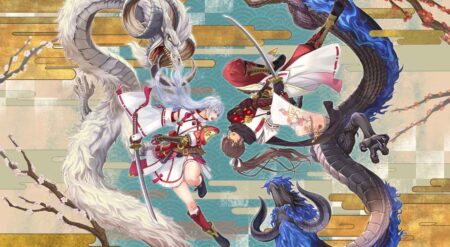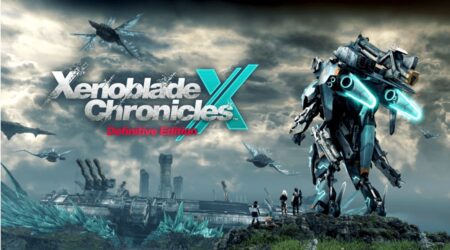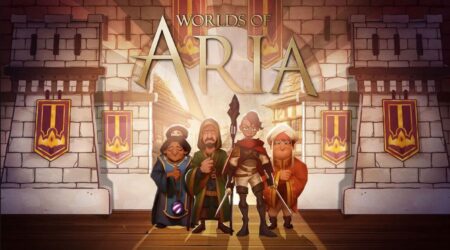
Astral Chain is a stylish 3D Action game developed by PlatinumGames and published by Nintendo. In Astral Chain it is the year 2077 and humanity is on the brink of extinction. The majority of the Earth has become corrupted by a substance known as red matter. Its presence mutates people, turning them into abominations. Because of this phenomenon, humanity has been forced to abandon the majority of the world and take up residence in an artificial island known as the Ark. As humanity struggles to make their new homework, even greater challenges rise up to meet them. Worst of all, the majority of people can’t even see it’s there.
When developer PlatinumGames’s newest 3D action game Astral Chain was announced at a Nintendo Direct earlier this year I immediately took notice. With famous action titles like Bayonetta and Nier: Automata highlighting their resume, I immediately wanted to learn more. Now that I’ve gotten to play through the roughly 20-hour campaign I can say I walked away impressed with what PlatinumGames has delivered. Rather than rest on their laurels and deliver a straight-up action game, they chose to innovate on their formula. Expanding beyond the stylish combat that is their hallmark and shooting for something new. And while these additions might not please everyone I thoroughly enjoyed them, as they allow Astral Chain to stand out within its genre.
In Astral Chain, the story centers around a pair of twins. The player chooses to take control of one of them, selecting between male or female. Whichever twin isn’t selected is still present and plays a prominent part in Astral Chain’s story. When the story begins the twins have just joined a special operations branch of the Ark’s police force called Neuron. Here they find out a secret that is being kept from the general populace: there are creatures known as chimera that are invading the earth through portals from a place known as the Astral Plane. The chimera caused the appearance of the red matter that is corrupting the earth. The bulk of the population cannot perceive these creatures. Only a select few can see and fight this threat. The twins are two of these few.
In order to combat the chimera, Neuron officers are given control of legions. Legions are chimera under control of Neuron officers through the use of astral chains. Legions serve their controllers both in combat and outside of combat. These services make it so Neuron can fight the chimera threat. They also help the populace at large as they struggle through the myriad of other challenges that besiege them.
The gameplay in Astral Chain is split into two parts. First, as each section of the game begins, the player has the opportunity to participate in investigations. These side quests range from helping find lost individuals, solving mysteries, and even clearing out traffic jams. These missions are largely optional but serve as nice breaks from the action. Many of them stand out as interesting distractions to participate in. Often times, they require using the player’s legions in interesting ways.
As you progress through Astral Chain you will eventually come to control five different legions. Each has its own specials abilities and attacks in combat. But, it’s out of combat where the differences in the legions really shine. From helping with platforming to activating hard to reach switches, or removing obstacles from the player’s path, the game never stops coming up with interesting ways for the legions to help the player. I also appreciated PlatinumGames’s decision to keep everything that can be interacted with labeled for clarity. As the player approaches an object it will have a symbol corresponding with the legion that they can use to interact with it.
The player also has access to a piece of equipment called the IRIS. The IRIS allows the player to see important details about their surroundings. Everything from the location of quest givers to objects of note is highlighted through the IRIS. This greatly helped side quests remain fun diversions and not devolve into chores. At the same time, it is mostly optional, so those who don’t want the feeling of hand-holding can ignore it.

While most of these side quests are entertaining in their own right, they also provide funds, experience, and items with a variety of uses. Attack buffs and health restoration items are gained through these missions, for example. But perhaps the best reason to invest time in these missions is the experience of interacting with the many denizens of the Ark. The world of the Ark feels real and fleshed out. While it is often a bleak place, the game takes plenty of opportunities to add a little goofiness to the setting. This goofiness made me feel much closer to the world of Astral Chain and added to my desire to save it.
While the side quests are fun, the real meat on this game is its action. Even though the controls have been streamlined in a mechanical sense compared to many of PlatinumGames’s previous titles, it’s lacking in none of the flair the studio’s games are known for. The player character has a single attack button and a single dodge button. No heavy/light or close/range options to chain together and make combos. Instead, it is interacting with the player’s legions that drives the nuances of combat. At certain points in combat, such as landing a certain number of hits, a visual prompt will let the player know they can do a synch attack. These attacks bring the legion instantly to the player to launch a powerful attack.
Legions can also be used to maneuver around the battlefield quickly. With a single button press the player can use the legion like a zip line, pulling them toward the legion and allowing the player to attack enemies quickly. This maneuver can also be used to escape from situations that are getting out of control.
These movement abilities function smoothly with the aid of a sleek two-character control system. With it, the player can take control of their legion at any time. By simply holding down the RZ trigger the player can then move their legion around with the left analog stick. While doing so the player still has control over their character as well. This keeps the player from being able to take too much time controlling the legion as the enemies will continue to engage their character. As a result, multitasking is a must as the player maneuvers both characters around.
The other, and coolest way, this dual-control mechanic works is in binding enemies. Whenever the player encircles an enemy with their astral chain the enemy will become bound. While bound the enemy is defenseless. During this time the player can score some easy hits before the enemy is freed.
Over the course of Astral Chain the player has the opportunity to improve themselves, and their legions, in a number of ways. From basic stat boosts to the player’s weapons, to unlocking new special abilities for their legions, there is a host of options to customize the combat experience. These options do a great job of allowing the player to tailor their experience to their liking. My favorite legion abilities include a heal-over-time effect and one that causes synch attacks to occur automatically when they trigger. This allowed me to focus on my enemies and decreased the multitasking that I was required to do.
Astral Chain also has several difficulty settings players can switch between on the fly, including a hard difficulty that requires lots of precise timing and an easy mode that will auto battle for you. PlatinumGames has gone out of their way to make Astral Chain available to players of all skill levels. The narrative of Astral Chain is an interesting sci-fi story that leans heavily into its anime-inspired aesthetic. The narrative feels fluid and keeps the player on their toes. While there are some spots where the story doesn’t really come together, overall, I enjoyed it. It kept the tension high without becoming too bombastic, and while a couple of twists were fairly obvious, it still held a fair share of surprises.
The only thing really holding back Astral Chain’s story are the characters. While none of them are particularly bad, none really stand out as noteworthy either. This lack of character is most seriously felt in the choice to make the protagonist silent. This was a huge miss for me as it left the character feeling extremely hollow. They even have audio dialogue for each twin when they aren’t the player character. One would think getting the actors to do a few more lines for when the character is chosen by the player wouldn’t have been that difficult. As is, this choice leads to lots of awkward moments when important scenes are happening and all your character does is stare.
The only other complaint I have aside from the characters lies in some of the platforming moments in Astral Chain. Some of these moments suffer as the controls don’t feel quite precise enough to handle the challenges the game presents. These shortcomings mostly lead to occasional falls during platforming sequences that I didn’t feel were my fault. While Astral Chain is very forgiving in where the player restarts after such falls, it spoiled more than a few moments for me.
Astral Chain carves a niche for itself in the stylish action genre through its diverse gameplay options and unique two-character controls. While it is held back a bit by its lack of character, the story is still well worth experiencing. I hope PlatinumGames can take the parts of this game that really shine, polish up the low points, and bring it all together to create a follow up that is truly amazing.
Astral Chain is available now on the Nintendo Switch.
Astral Chain
-
Rating - 8/108/10
TL;DR
Astral Chain carves a niche for itself in the stylish action genre through its diverse gameplay options and unique two-character controls.






